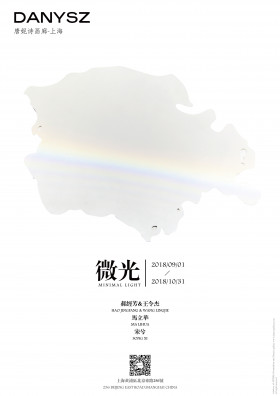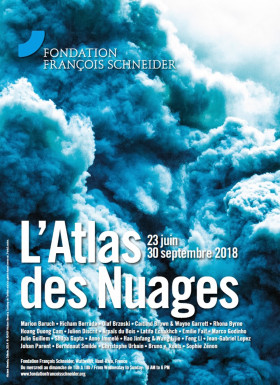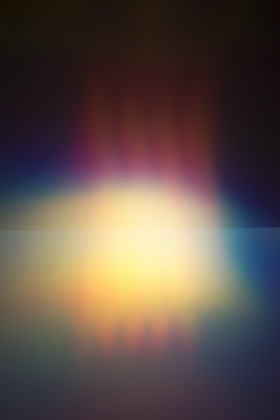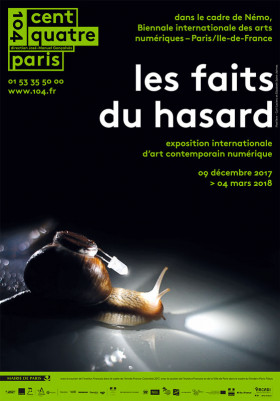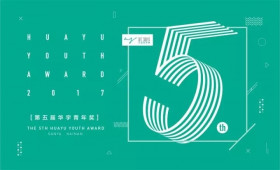视觉系还是概念性?—— 专访郝经芳 & 王令杰 (上)
EXCLUSIVE INTERVIEW OF DUO ARTISTS JINGFANG HAO & LINGJIE WANG (part I)
若你近期跨入唐妮诗画廊上海空间,定会被艺术家组合郝经芳 & 王令杰(下为郝 & 王)为画廊群展“微光”所创作的全新装置«彩虹,云梦泽»所吸引。近日,画廊也与艺术家就这件取得热议的作品展开对话,深入了解这对艺术家组合的创作经历。
If you recently visited Danysz gallery – Shanghai, you will be attracted by Jingfang Hao & Lingjie Wang’s newest installation Rainbow, Yun-Meng Lakes, created for the group show MINIMAL LIGHT. The gallery had a dialogue with the couple about this piece which were ardently discussed. Let’s know more about their career.
Meng YU – Danysz gallery
我们看到你们最初的彩虹系列作品是从简单矩形开始,去年开始延伸到复杂的湖海轮廓,是什么契机让你们想将彩虹投射于河海湖泊中呢?
We saw your original artworks about rainbow series, starting with a simple rectangle and going to the complex outline of the lake and sea from last year. What is the opportunity for you to project the rainbow into the rivers and lakes?
郝 & 王 HAO & WANG
源于水。空气中的小水滴,散在空中是云,凝结滴下来是雨雪,落在地上形成江河湖海。而彩虹正是在空气中尚还有雨滴的时候,阳光照射在空气中无数小水滴上形成的。
我们所选择的河海湖泊,皆是曾经在历史上真实存在过,惠及一方,却由于气候变迁,很遗憾都已经消失了的。
From water. The small water droplets scattered in the air are clouds, and the condensation drops into rain and snow, falling on the ground to form rivers and lakes. The conformation of rainbow is just when there are still raindrops in the air, and the sun shines on the numerous water droplets.
The rivers and lakes that we have chosen, all existed in history and benefited one side, but they have disappeared because of the climate change.
Fiona Chen – Danysz gallery
这次展览为何会选择呈现云梦泽呢?在云梦泽中重现彩虹有什么特殊意义吗?
Why did the exhibition choose to present Yun-Meng Lakes? Is there any special significance in recreating rainbow in Yun-Meng Lakes?
郝 & 王 HAO & WANG
所谓云梦泽就是“气蒸云梦泽”的云梦泽。这两个湖泊,大的叫做云泽,小的为梦泽。云梦地区是古时楚王的狩猎区,包括山区,平原,湖泊等。其中的湖泊地区被称为云梦泽。由于位处汉水和长江的交汇地带,土壤肥沃,孕育了宝贵的楚地文化。而随着时间的推移,云梦泽早已彻底消失,只借助着孟浩然、贾至他们的诗句,活在我们的记忆当中。
The so-called Yun-Meng Lakes are referred from a poem « While vapours all over the Yun-Meng Lakes up roll, bores roar ahead to rock the Yue-Yang City Wall ». These two lakes, the big one is Yun Lake and the small one is Meng Lake. The Yun-Meng area is a hunting area for the ancient kings of Chu, including mountains, plains, and lakes. The lake area is called Yun-Meng Lakes. Because of the intersection of Hanshui and the Yangtze River, the soil is fertile and has nurtured a valuable culture of Chu. As time goes by, Yun-Meng Lakes have completely disappeared, and only with the help of Meng Haoran and Jia Zhi’s verses to live in our memory.
Meng
我们听说二位即将在另一个群展活动中呈现砂面彩虹,这对灯光和空间的掌握就又是新的挑战吧?这些装置在运输和现场布置中会遇到什么困难吗?
We have heard that you will soon present a sand-faced rainbow in another group exhibition. Is this a new challenge for lighting and space? What difficulties will you encounter in transportation and site layout?
郝 & 王 HAO & WANG
我们在九月下旬将会参加一个在川美美术馆,唐克扬老师策划的一个群展。在展览上会展出一个大的彩虹装置,彩虹将会被呈现在空间的下方平面上。作品将会在现场制作,我们曾经已经实现过一个类似的方案在里昂双年展上。这次展厅是一个挑战极高的空间,观众会有机会沿着展厅一侧的坡道拾级而上,而彩虹就在这个过程中逐步逐步呈现在观众的眼前。直到观众走上展厅的最高点,他将会看到一个完美的彩虹形状。
In late September, we will participate in a group exhibition planned by Mr. Tang Keyang at Museum of Sichuan Fine Arts Institute. A large rainbow installation will be displayed in the exhibition, and it will be presented on the lower plane of the space. The work will be produced on site, and we have already implemented a similar program at the Lyon Biennale last year. This exhibition hall is a very challenging space. The audience will have the opportunity to climb up the slope on the side of the exhibition hall, and the rainbow will gradually appear in front of the audience in the process. Until the audience walks to the highest point of the exhibition hall, he will see a perfect rainbow shape.
郝 & 王 HAO & WANG
好几年,我们就一直在研究光。处理光是一件非常棘手的事情,为此我们做了很多实验。由于光线中有许多颜色,彩虹很容易在我们的脑海中浮现。通过在不同的艺术环境和空间中呈现和诠释彩虹,我们试图了解如何在物理世界和人们心中获得彩虹的形式。在我们的中学物理课上,大多数人都已经被告知,彩虹是由太阳光通过空气中的微滴水折射和反射而形成的。 然而,再现一个理论的证明恰恰与我们的意图相反。我们探索了另一种媒介的材料世界,它可以支持我们的这个开发彩虹的可能性的想法,例如,在里昂的展览中,我们使用了玻璃微球来改变视角,它相当于在沙子的表面呈现彩虹。
We have been working on light from several years ago. To work on light is very tricky, so we did lots of experimental things. As there are many colors in the light, rainbow emerges easily in our mind. By performing and interpreting rainbow in different artistic contexts and spaces, we made our approach to try to understand how rainbow get its form in physical world and also in people’s mind. Most of us have already been told during our middle school physical lessons, that rainbow is formed by the refraction and reflection of sun light through the micro drips of water in the air. However, reproducing a demonstration of the theory is just the opposite of our intention. We explored the world of materials for another medium which could support our ideas to develop the possibilities of rainbow and for example, during the exhibition in Lyon Biennial, we used glass microspheres to change the perspective, presented a rainbow on a quite surface of sand on the floor.
郝 & 王 HAO & WANG
就布展来说,光源需要从天花板上吊挂下来,精确到空间中一个具体的位置。这对现场配合会是一个挑战。
In terms of the process of arranging the exhibition, the light source needs to be hung from the ceiling to a specific location in the space. This will be a challenge for on-site coordination.
Fiona
二位的工程学背景让艺术作品更具内涵和观赏性,像这次展出的火烧云的灵感是从上海日落时分的云而来,可以给我们介绍一下云朵的具体建模和选择涂层颜色的过程吗?
The engineering background of you two makes the artworks more connotative and ornamental. The inspiration for this burning cloud is from the clouds at sunset in Shanghai. Can you tell us about the specific modeling of the cloud and the process of choosing the color of the coating?
郝 & 王 HAO & WANG
比如大家看到天上一朵云,心里想着真美,会去问这云是如何制作的么?我们其实并不介意透漏具体的制作方法,而且也没什么好隐瞒的。但是我们不想要观众的着重点偏离作品的本意。火烧云就是一朵美的,敏感的,娇羞的,可以随着环境变化的云。
For example, if you see a cloud in the sky you will think about it in your heart and will ask how this cloud is made? We don’t really care about leaking specific production methods, and there is nothing to hide. But we don’t want the audience’s focus to deviate from the original intention of the work. The burning cloud is just beautiful, sensitive, shy, it is the cloud that can change with the environment.
Meng
此次在上海展出的云和欧洲展出的有什么异同吗?
What are the similarities and differences between the clouds exhibited in Shanghai and in Europe?
郝 & 王 HAO & WANG
从形态和技术上说,基本相同。但是这次在上海展出的两件云作品,名字分别叫做《云, 19点01分》和《云, 19点28分》。这两个名字的来源和他们所展出的位置息息相关——一年中日照最长的一天——6月22日,在上海,太阳下山时接触到地平线的时间、和太阳完全没入地平线的时间。就这么短短不到半小时的时光里,天空呈现出最丰富的色彩。而云的色彩也是来源于此。同样,在欧洲展出的时候,就会根据欧洲展出地的时间来确定名字了。
In terms of form and technology, they are basically the same. But the two works exhibited in Shanghai this time are called A step to Sky, 19h01 and A step to Sky, 19h28. The origin of the two names is closely related to the position they are exhibiting – the longest day of the year – June 22 in Shanghai, when the sun goes down to the horizon, and when the sun is completely out of the horizon. In such a short time of less than half an hour, the sky is the most colorful. The color of the cloud is also derived from this. Similarly, when it is exhibited in Europe, the name will be determined based on the time of the place of exhibition in Europe.
微 光
郝经芳 & 王令杰
马立华
宋兮
2018年9月1日–10月31日
唐妮诗画廊 – 上海黄浦区北京东路256号
周一至周六10 – 18点/周日12 – 18点
MINIMAL LIGHT
Hao Jingfang & Wang Lingjie
Ma Lihua
Song Xi
SEP. 1st – OCT. 31st, 2018
Danysz gallery, 256 Beijing East Road, Shanghai
Open from Monday to Saturday 10am-6pm / Sunday 12am – 6pm
郝经芳 & 王令杰(Jiangfang Hao & Lingjie Wang)
今时的阳光,必不是当日照在那片湖海上的阳光,而此时出现在作品上的彩虹,能否让我们回忆起曾经和我们息息相关,甚至可能是孕育了一方文明的湖海的生机勃勃?
The sunshine of the present day is not the sunshine that shined on the lake at that time. Can the rainbow appearing on the works right now remind us of the once-related relationship with us or maybe it is the vitality of the lake that gave birth to one civilization?
 En
En 中文
中文